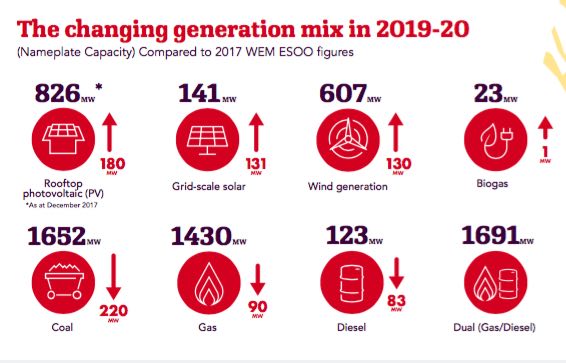The Australian Energy Market Operator has forecast a near three-fold rise in rooftop solar in Western Australia over the next 10 years, and a potential 10-fold increase in the uptake of battery storage as consumers emerge as a major player in the state’s grid.
The forecasts were included in AEMO’s latest Electricity Statement of Opportunities, an annual document that helps its planning for the years ahead.
AEMO expects 134MW of rooftop solar PV to be installed annually on average over the next 10 years, resulting in 2,273 MW of total installed rooftop solar PV by 2027-28. That compares to 826MW at the end of December.
Battery storage is expected to increase even more dramatically, particularly given its low start – with the uptake expected to jump to as high as 500MWh by 2027/28, from around 50MWh at the end of the coming financial year.
In contrast to its recent comments about the “threat of blackouts” caused by rooftop solar – claims that earned a sharp rebuke from the solar industry – this report looks more at the potential benefits of the shift to rooftop solar and battery storage, and the greater role played by consumers.
It notes that the rapid uptake of rooftop solar “continues to reduce peak demand and operational consumption”, although it won’t likely push that grid peak later than 6pm, at least until there is a broader uptake of battery storage that can store excess solar output for use in the early evening.
AEMO notes that peak demand – which has averaged around 3,700MW over the past 10 years – was at its second lowest level since 2009 last year, thanks to the influence of rooftop solar. It was the first time since 2007 that peak demand occurred in March.
It notes other benefits, too, of the shift to renewables, with WA finally emerging from an investment drought in large-scale solar and wind projects that saw just 8MW of capacity installed over a three-year period, when the then conservative state government turned its back on renewables.
WA’s grid, unlike the rest of the country, includes a “capacity market”, and AEMO notes that the combination of rooftop solar and new large-scale wind and solar will also reduce the price of this Reserve Capacity, and increase the capacity level over the outlook period.
Overall, AEMO notes, the amount of existing and committed generation resources, alongside demand-side management capacity, is sufficient to meet forecast peak demand in the state’s South West interconnected system (SWIS).
This is despite around 400MW of coal, gas and diesel being replaced by an equivalent amount of rooftop solar, large-scale wind and large-scale solar. (See graph above).
“While there have been recent retirements of some fossil-fueled generators, new renewable generation capacity is enabling the RCT to be met within the defined reliability standard, and with significantly lower excess capacity than historically recorded” said Cameron Parrotte, who heads AEMO’s operations in WA.
The other interesting aspect of the ESOO forecasts is the inclusion of electric vehicles, but this varies widely – from a forecast of 2 per cent share of the total market by 2028, to 20 per cent.
“Projections for EV uptake assumed a slow start, due to limited infrastructure, the narrow range of models currently available, and the cost relative to conventional petrol or diesel vehicles,” it says, before a rapid increase as the economics of EVs become more attractive, but only from the late 2020s.
“The range between the high and low forecasting scenarios is relatively wide. This is partly due to uncertainty regarding decisions on industry policy, such as vehicle fleet emission standards, which could influence the EV uptake rate,” it says.














